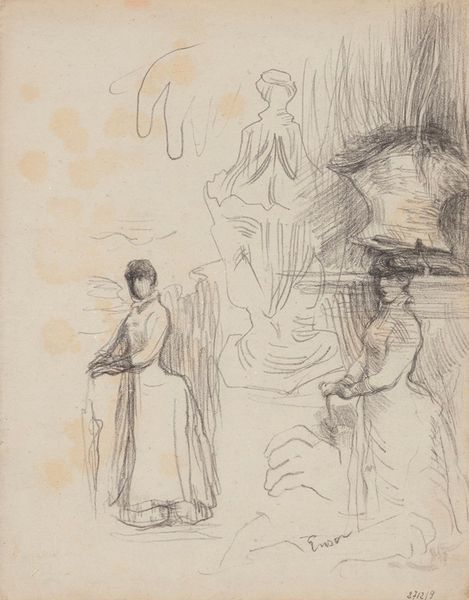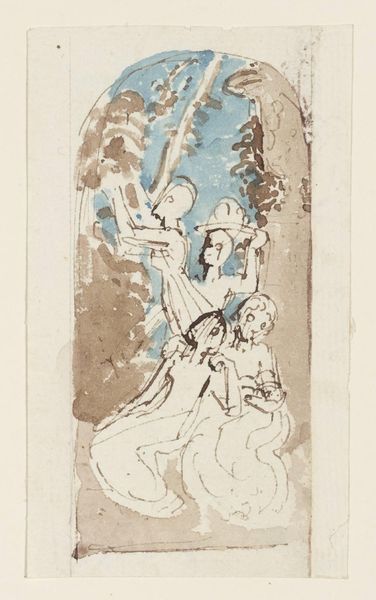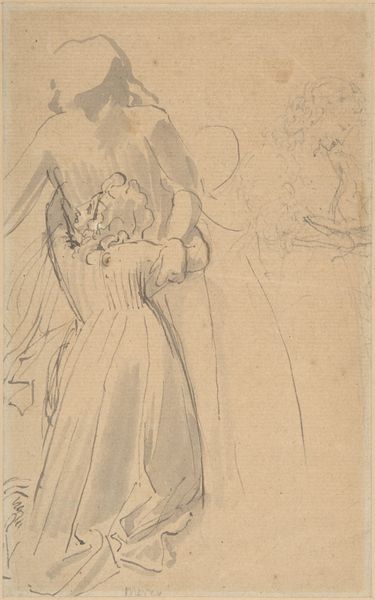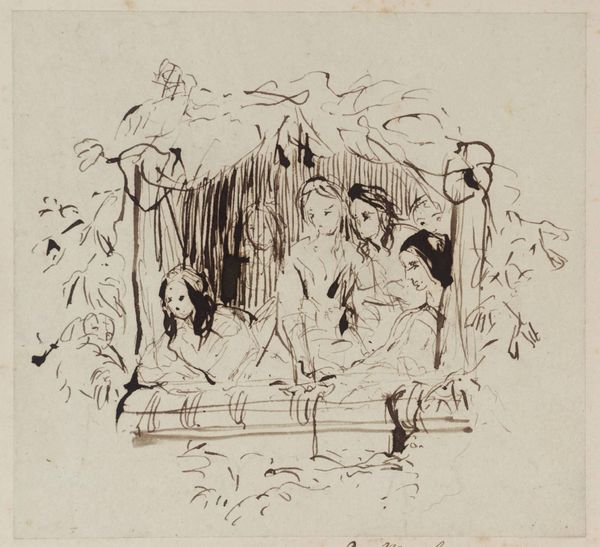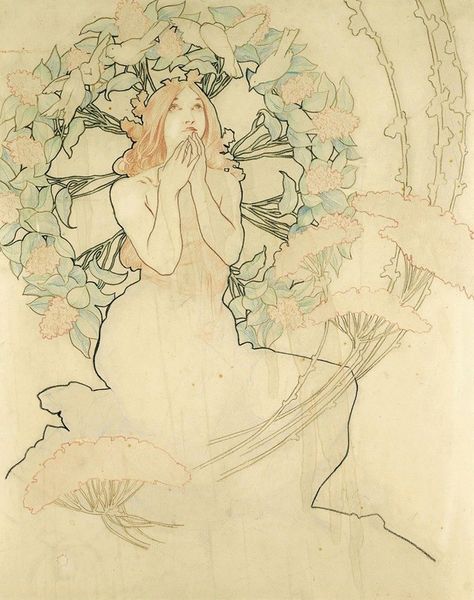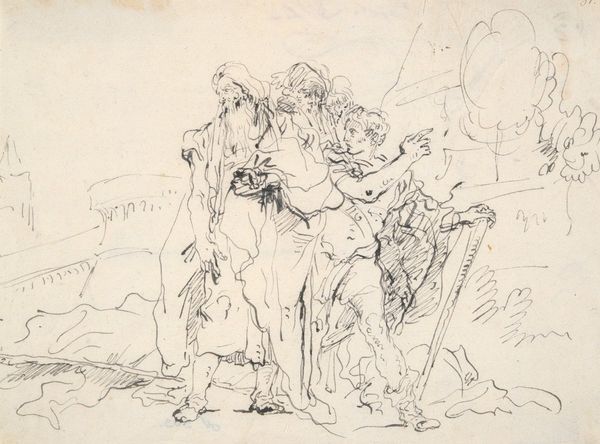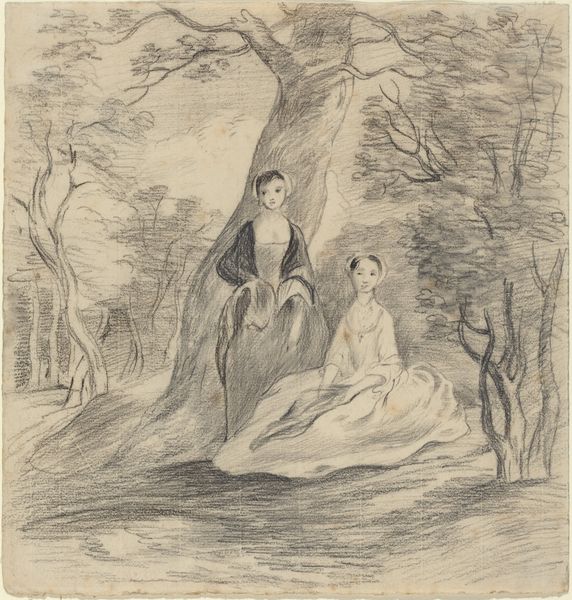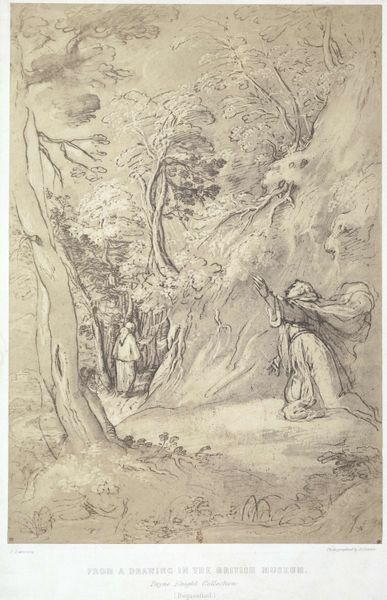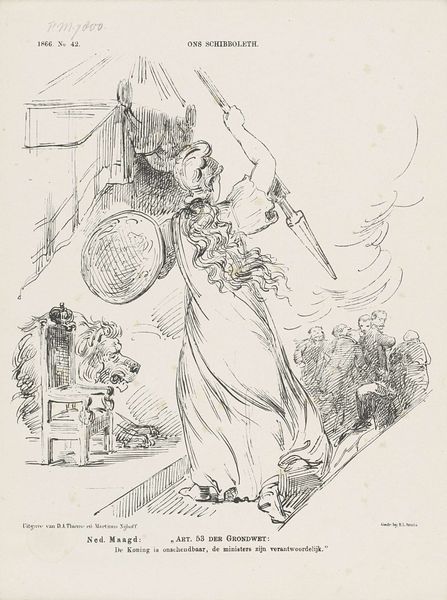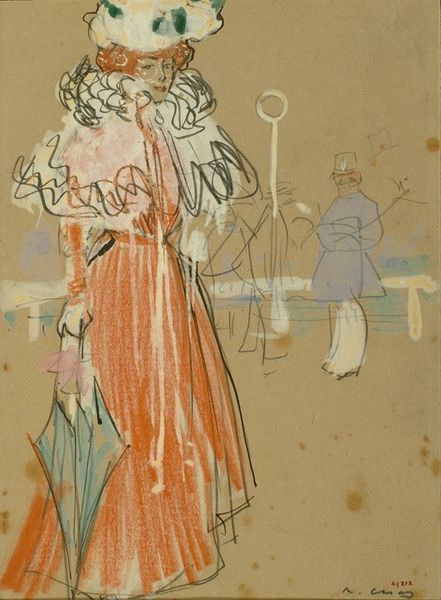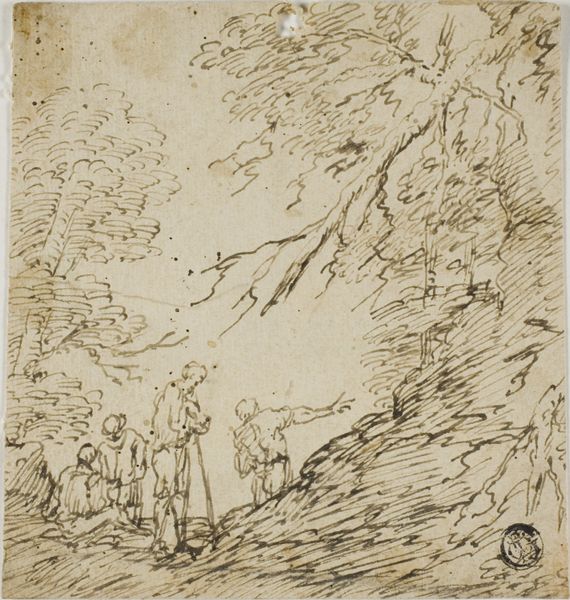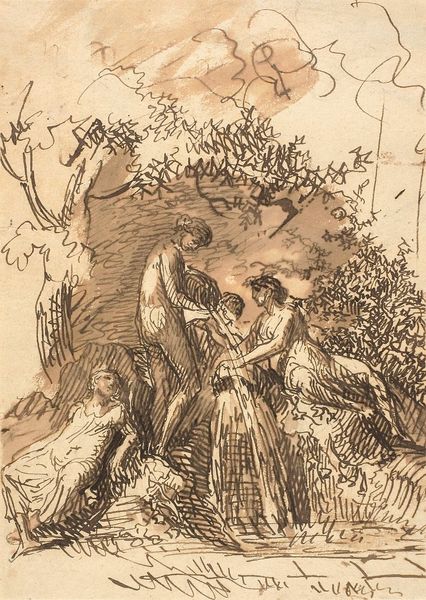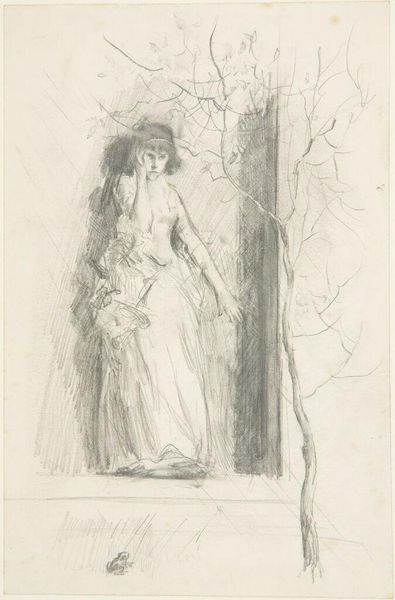
drawing, watercolor
#
drawing
#
landscape
#
figuration
#
oil painting
#
watercolor
#
romanticism
#
mythology
#
watercolour illustration
#
watercolor
Copyright: Public Domain: Artvee
Curator: Let's consider this artwork, "Oberon and Puck", by Robert Smirke. We believe this drawing to be from the late 18th or early 19th century. It’s done in watercolor and ink, primarily. Editor: My initial reaction is that there's a certain theatricality here. The figures seem posed, and the loose, flowing lines create a sense of dynamism—even chaos—that captures the spirit of Shakespeare’s play. Curator: Yes, it’s based on “A Midsummer Night's Dream." Robert Smirke was very active in illustrating literary works for a burgeoning print market and book industry, which was just then becoming broadly accessible. He often provided imagery for popular plays, histories, and novels. Editor: The way Smirke uses wash and line is fascinating. Observe how the forms of Oberon and the figures within his fairy court melt in the background, which allows us to decode relationships of power and influence. Notice too how light filters unevenly through the tree limbs creating both strong shadows, while Puck himself, almost leaps forward with defined edges and vibrant highlights. Curator: Absolutely. Smirke really captured the ethos of Romanticism through this ethereal rendering, this focus on fantasy and myth. We also see emerging ideas concerning the "sublime," in play here. Note also, the way nature, itself, serves as both backdrop and participant. Editor: It is hard to separate form from subject, here. I mean, consider the composition itself; the perspective seems flattened, almost dreamlike, lending a sense of the surreal to this imagined scene. Curator: Indeed. And this reflects the artistic tastes of the era and particularly this artist's engagement in a broader, cultural interest in theater, in literature, and folklore that was rising through all social classes. Editor: The warm monochrome palette reinforces that fantastical, slightly archaic, atmosphere that really pulls you into the narrative. It gives me a strong sense of a remembered tale or legend. Curator: Yes, the tonality definitely amplifies the romantic allure of the subject matter, connecting audiences to historical narratives as well as an awareness of current cultural themes concerning magic and transformation. It's both an illustration, and a statement about how myth can inform modern identity. Editor: For me, it’s really the visual texture created through the rapid application of strokes—it’s very much an illustration and an artistic expression simultaneously, offering access to an interior landscape rather than something externally defined. Curator: Precisely! "Oberon and Puck" offers a perfect glimpse into the art market of the late 18th century and the period's evolving social values. Editor: Yes, a fleeting glimpse through skilled lines that offers depth beyond a simple literary picture.
Comments
No comments
Be the first to comment and join the conversation on the ultimate creative platform.
